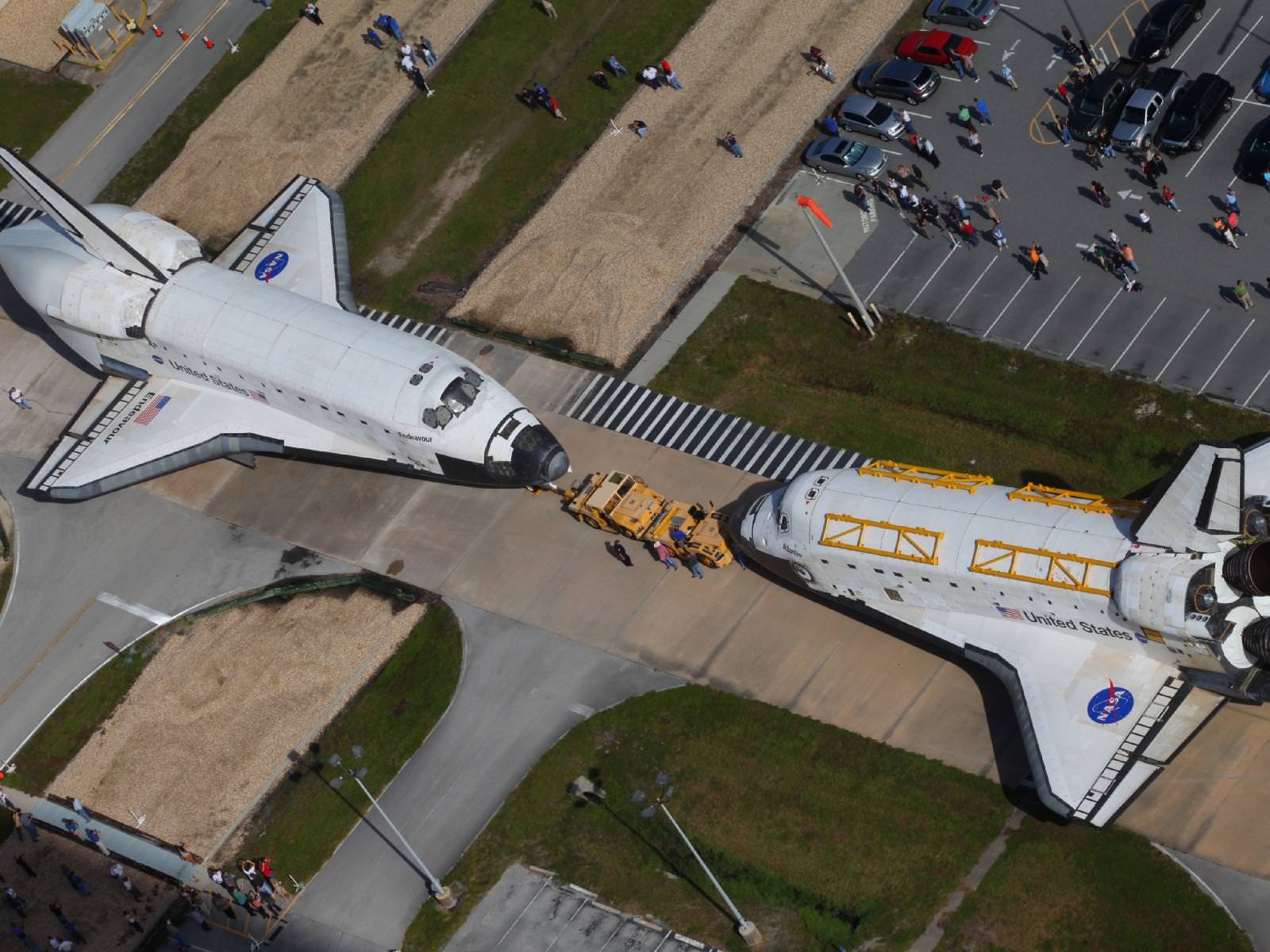This is a sight that will probably never be seen again: two space shuttles nose-to-nose in the same location. NASA's space shuttles Endeavour and Atlantis switched locations today at Kennedy Space Center in Florida, and met each other for the last time in front of Orbiter Processing Facility 3.
Endeavour was moved from OPF 2 to the Vehicle Assembly Building where it will be housed temporarily until its targeted departure from Kennedy atop the Shuttle Carrier Aircraft in mid-September. After a stop at the Los Angeles International Airport, Endeavour will move in mid-October to the California Science Center for permanent public display.
Atlantis will undergo preparations for its move to the Kennedy Space Center Visitor Complex in November, with a grand opening planned for July 2013.
Here's a look at some other instances when two space shuttles were in close enough proximity to have their pictures taken together:
[caption id="attachment_94721" align="aligncenter" width="580" caption="Space Shuttles Enterprise, left, and Discovery meet nose-to-nose at the beginning of a transfer ceremony at the Smithsonian's Steven F. Udvar-Hazy Center, Thursday, April 19, 2012. Credit: NASA//Paul E. Alers."]
[/caption]
This event took place today at the National Air & Space Museum's Udvar-Hazy Center in April, 2012 as space shuttle Discovery, the first orbiter retired from NASA's shuttle fleet, met up with its prototype sister, Enterprise as they switch spots. Discovery is now at the Air & Space Museum, while Enterprise headed to New York City's Intrepid Museum.
[caption id="attachment_94722" align="aligncenter" width="580" caption="This view shows two space shuttles on adjacent Kennedy Space Center Launch Complex 39 pads with the Rotating Service Structures retracted I 1990. STS-35's Columbia is on Pad A (foreground), while its sister spaceship, Discovery, is beginning preparations for STS-41. Credit: NASA"]
[/caption]
The first time two space shuttles were ever on the launchpads at the same time was in 1985. Then it was Columbia for STS-61-C and Challenger for the ill-fated STS-51-L. In the 30-year duration of the space shuttle program, having two shuttles on the launchpads at once happened just 17 times.
[caption id="attachment_94725" align="aligncenter" width="580" caption="Space shuttle Atlantis on Launch Pad 39A (left) is accompanied by space shuttle Endeavour on Pad 39B in 2009. This was the final time two shuttles were on launch pads at the same time. Endeavour will stood by in case a rescue mission was necessary during Atlantis' mission to upgrade NASA's Hubble Space Telescope. Credit: NASA"]
[/caption]
[caption id="attachment_94723" align="aligncenter" width="580" caption="Space Shuttles Discovery and Endeavour meet for a nose-to-nose encounter of gaping holes at the Kennedy Space Center on Aug. 11, 2011. The two NASA shuttles shorn of spaceflight maneuvering capability swapped locations to continue the transition to retirement and public display at museum in Virginia and California respectively. Credit: Mike Deep for Universe Today. "]
[/caption]
[caption id="attachment_94724" align="aligncenter" width="580" caption="Another view of the same meetup, Discovery (right) and Endeavour paused for a unique nose-to-nose photo opportunity before going their separate ways outside Orbiter Processing Facility-3 at the Kennedy Space Center on August 11, 2011. Credit: NASA"]
[/caption]
[caption id="attachment_94726" align="aligncenter" width="320" caption="This event never really happened, thankfully. This is a slide from a NASA presentation showing how a shuttle rescue mission would work. Credit: NASA"]
[/caption]
 Universe Today
Universe Today
